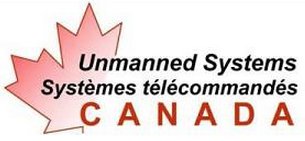Unmanned Systems Canada has just announced details of its11th Unmanned Systems Canada Student UAS Competition in 2018-2019.
Attention All UAS Teams:
Severe thunder storms generated from this summer’s severe heat have damaged a solar farm near Alma, Québec. The utility company responsible for power in the Lac St Jean area is anxious to identify the damage, make the repairs and restore power. They need a competent UAV company to do the job. Will your “company” win the bid?
Scenario
This is a “made in Canada” Simulated BVLOS UAS Student Competition. The purpose of the competition is to promote and develop Canadian expertise and experience in unmanned systems technologies at the university and college levels. Small unmanned aerial vehicles are complex systems requiring a well planned and executed design and rehearsed operational approach. In addition, safety considerations are important factors in this competition as in any other vehicle design project.
Solar power is the fastest growing source of new energy, and it is predicted that its capacity growth will be higher than any other renewable energy by 2022. In Canada, photovoltaic cells have been primarily used as standalone units powering off-grid remote homes, navigational devices, pipeline monitoring systems and telecommunication equipment.
Solar farms are required by law to be scanned annually with an infrared camera to inspect their efficiency, although it is recommended that more regular inspections be completed to maintain the solar farm at peak performance and minimize potential power loss. Due to the large size of these solar farms, which can range from 1 to 100 acres or more, UAS are being deployed to provide accurate imagery and greater accuracy than possible with inspectors using handheld cameras.
A UAS with an infrared camera can quickly identify a failed cell or diode because it shows when a cell is not generating electricity. Panels can also fail for reasons other than faulty cells. For example, dirt can build-up on the surface of the panel, inclement weather can damage the cells, and even small debris can create micro-scratches on the surface which ultimately defects sunlight.
This competition will focus on the development of a system capable of providing timely information concerning the damage inflicted to a solar farm after a windstorm, as well as the prioritization of repair.
The competition takes place in two phases with the Phase I design report from each team due on January 13th 2019, and the Phase II operational demonstration taking place May 3-5th 2019 at Alma UAS Center of Excellence, Quebec. Teams will be graded on the quality and completeness of their design reports and the results of their flight demonstrations. There will be separate prizes for each phase.
Eligibility
The competitors shall be teams from a recognized Canadian university or college organized internally at the discretion of their respective members.
Application and Registration
Teams should send an email showing their interest to competition@unmannedsystems.ca and complete the online registration process on unmannedsystems.ca including paying the team registration fee of 500$. Once fully registered, teams will have access to more information. Registration deadline is November 9th 2018.
All relevant competition information will be located on unmannedsystems.ca. Check the competition website regularly for updates. Registered teams have access to more information and documents in a shared folder. All questions should be addressed to: competition@unmannedsystems.ca
Registration Deadline: 9th November 2018
(Note: Important Competition Information only available after full registration)
Paper Design Submission: January 13th 2019
Flight Demonstration: May 3-5th 2019 at Alma UAS Center of Excellence, Quebec.
The Concept of Operations (CONOPS) and Rules can be accessed here.
Source: Press Release

